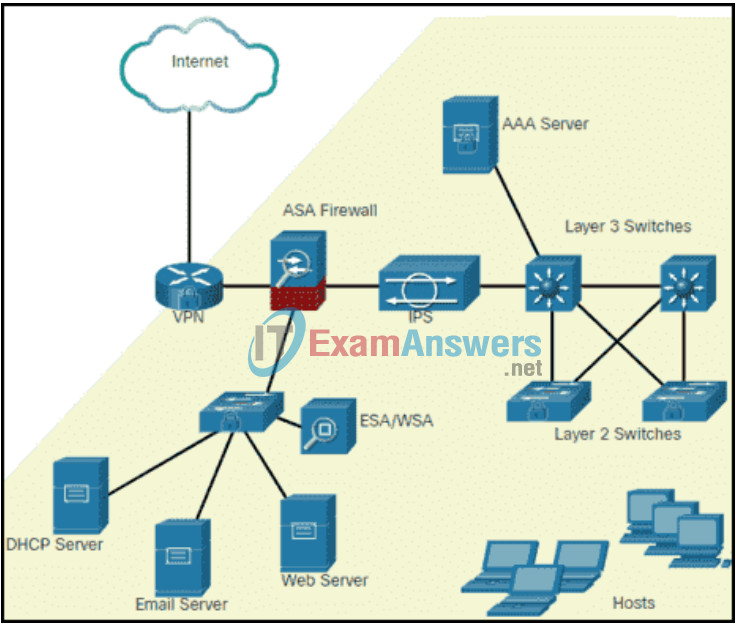2.3.2 Securing Networks Quiz Answers
1. Which security measure is typically found both inside and outside a data center facility?
- a gate
- exit sensors
- security traps
- biometrics access
- continuous video surveillance
2. What is hyperjacking?
- taking over a virtual machine hypervisor as part of a data center attack
- overclocking the mesh network which connects the data center servers
- adding outdated security software to a virtual machine to gain access to a data center server
- using processors from multiple computers to increase data processing power
3. Which statement accurately characterizes the evolution of threats to network security?
- Internal threats can cause even greater damage than external threats.
- Internet architects planned for network security from the beginning.
- Early Internet users often engaged in activities that would harm other users.
- Threats have become less sophisticated while the technical knowledge needed by an attacker has grown.
4. When considering network security, what is the most valuable asset of an organization?
- customers
- data
- financial resources
- personnel
5. Which resource is affected due to weak security settings for a device owned by the company, but housed in another location?
- cloud storage device
- hard copy
- removable media
- social networking
6. In the video that describes the anatomy of an attack, a threat actor was able to gain access through a network device, download data, and destroy it. Which flaw allowed the threat actor to do this?
- open ports on the firewall
- lack of a strong password policy
- a flat network with no subnets or VLANs
- improper physical security to gain access to the building
7. Refer to the exhibit. An IT security manager is planning security updates on this particular network. Which type of network is displayed in the exhibit and is being considered for updates?

- CAN
- WAN
- SOHO
- data center
8. What are two security features commonly found in a WAN design? (Choose two.)
- port security on all user-facing ports
- VPNs used by mobile workers between sites
- firewalls protecting the main and remote sites
- WPA2 for data encryption of all data between sites
- outside perimeter security including continuous video surveillance
9. Which security technology is commonly used by a teleworker when accessing resources on the main corporate office network?
- IPS
- VPN
- SecureX
- biometric access
10. Which technology is used to secure, monitor, and manage mobile devices?
- MDM
- VPN
- rootkit
- ASA firewall4
